Phalaenopsis Home Orchid Care
Now in our country and abroad, the house phalaenopsis orchid is very popular. This is the perfect flower for an apartment. He is unpretentious, therefore, it is with him that many begin acquaintance with the amazing world of orchids.
Phalaenopsis features
Phalaenopsis is a genus of herbaceous plants from the orchid family. Translated from Greek, the word "phalaenopsis" means "butterfly", and indeed, the flowers of this orchid are very similar to large bright butterflies floating in the air on almost invisible peduncles.
In nature, there are about 40 species of phalaenopsis, most of them grow in Southeast Asia. The name of the genus was given by the botanist Blume. A scientist discovered these plants in 1825. At dusk, the Dutchman Blume, who was on one of the islands of the Malay archipelago in order to study its flora, saw a flock of butterflies, but when he came closer, he realized that he was attracted not by butterflies, but by beautiful flowers, which he later called Phalaenopsis Amabilis ...
Like many plants of the tropical flora, phalaenopsis have a monopodial branching type, that is, an apical bud is preserved on it throughout the life of the shoot. For comparison, in sympodial plants a generative shoot appears from the apical bud, which stops growing after flowering, and then a new shoot develops at the base of the old one. Monopodial branching is more primitive than sympodial branching, which indicates the ancient origin of orchids.
Phalaenopsis leaves form a rosette. The stem is very short, the internodes are barely visible on it.
Phalaenopsis flowers are round or star-shaped. Species with rounded flowers are grouped in the Euphalaenopsis series, the rest are in the Stauroglottis series.
- Euphalaenopsis - bloom during the cold season.
- Stauroglottis - bloom in the warm season with small flowers, similar in shape to stars. They grow poorly in the apartment.
The plant has thick roots with a round cross-section, which grow into any rough surface: bark, stone. The roots are covered with light or white velamen.
It is interesting!
Velamen is a dead tissue that is highly hygroscopic. It is found in many epiphytes and plants living in periodically drying out substrates. Porous velamen, like a sponge, absorbs moisture from the air and gradually transfers it to the roots. It also protects the fragile roots of phalaenopsis from mechanical damage.
Phalaenopsis peduncles are long, thin, flexible. They grow from the axils of the leaves, and they can pierce the orchid leaf through. In some species, peduncles reach a meter in length and carry up to hundreds of flowers ranging in size from 1 to 13 cm.
When all the flowers have faded, lateral branches appear on the peduncle and flowering continues. Thus, the phalaenopsis bloom can last up to six months. Some types of phalaenopsis are capable of forming babies on peduncles, which can later be rooted.
Orchids in nature
In nature, phalaenopsis grow in whole colonies, growing with the help of children in the same way that strawberries grow with a mustache. In areas of natural growth, such orchids are found along the banks of water bodies, on trees, rocks. There are species that grow on the seashore, attach themselves to rocky shores and bathe in the spray of sea water.
Phalaenopsis always settle near water and do not have a lack of moisture, so they do not form pseudobulbs, as other orchids do.
Pseudobulbs are formations in which orchids store water and nutrients. Phalaenopsis stores its supply of nutrients and water in its fleshy, thickened, broad leaves. In some species, the length of the leaves reaches a meter.
There are deciduous phalaenopsis, but in indoor conditions they do not shed their leaves.
Phalaenopsis in the apartment - care
Orchids naturally inhabit and under tree crowns - so they don't need a lot of light. When growing phalaenopsis in an apartment, the illumination level of 10,000 lux is considered optimal. This can be achieved by placing the flower away from the window and illuminating it with a fluorescent lamp. Under these conditions, the home orchid develops well, sometimes overtaking greenhouse plants.
On the southern windowsills in summer, the plant is carefully shaded. In winter, phalaenopsis can be kept on any window. During this period, even on the southern windows, illumination is useful, since the duration of the daylight hours of the phalaenopsis should be at least 12 hours (in the summer it is 14 hours).
To keep phalaenopsis, a temperature of 15-32 ° C is needed. The temperature should drop slightly at night. For the transition to flowering, it is enough that the night temperature drops to 16-18 ° C for 2-4 weeks. When the peduncle appears, the night temperature can be increased to 19-22 ° C.
For irrigation, use warm, preferably rainwater. During the flowering period, plants are especially in need of moisture, and the substrate must always be kept slightly wet. In unfavorable weather (cold or cloudy), plants are not watered.
The most difficult period in plant life is December and January. At this time, they are slightly dried, stopping watering, and the phalaenopsis enters the stage of easy rest. Phalaenopsis is watered in the morning or in the morning, making sure that no water gets into the outlet. The trapped moisture is removed from the axils of the leaves with a paper napkin.
Once every few weeks, the plants are rinsed under the shower to remove the dust. Orchids love this procedure, as in nature they literally bathe in the spray of rain and river water. Phalaenopsis prefer damp air, but in room conditions they can grow even at 40% humidity, standard for an apartment.
Young plants obtained from seeds or children are kept in a greenhouse, creating the most comfortable conditions for them with high humidity until the diameter of the rosette reaches 10-20 cm.Adult plants grow well on the window and do not need high humidity.
When growing phalaenopsis, you must always remember that excess moisture at low temperatures or poor lighting is extremely dangerous.
Top dressing
During the flowering period, the plants are fed once every 1-2 weeks with fertilizer for orchids. The peculiarity of all orchids is that they do not tolerate high concentrations of minerals, therefore, special - not concentrated - feeding is created for them. If you have to feed phalaenopsis with ordinary fertilizer, then it needs to be diluted with water much stronger than recommended in the instructions.
In winter, fertilizing is carried out once a month with fertilizers with a minimum concentration. Plants grown without backlighting are not fed at all in winter.
Growing methods
Phalaenopsis are grown in pots, baskets or blocks. The blocks grow species with huge leaves, such as phalaenopsis gigantea, or small plants in greenhouses. Plants are placed on blocks "upside down" - this is how they grow in nature.
In all other cases, it is more convenient to use ordinary plastic containers with additional holes in the bottom. A third of the pot is covered with drainage, then the plant is installed and the roots are carefully covered with a substrate, without compaction.
The substrate for young phalaenopsis can be made independently by taking moss and foam granules. Adult phalaenopsis are grown in a substrate consisting of pieces of bark, to which you can add a little sphagnum.
Transfer
Phalaenopsis can be transplanted at any time of the year, but it is advisable to do this during the period of root activity. For each variety and species, the roots can start growing in different months, therefore, the plant must be observed - as soon as new aerial roots begin to appear, it can be transplanted.
Advice
Adult phalaenopsis are replanted every 3 years, and seedlings and young ones - twice a year.
After transplanting an adult plant, it is sprayed with a fungicide and placed in a shade for 2-3 weeks. The leaves are sprayed with water daily. It can be transferred to the windowsill only after 2 weeks.
Reproduction
Phalaenopsis is not easy to propagate. Some species and hybrids give babies easily, others very hard. You can propagate your favorite orchid by dividing by cutting off the upper part with several air roots. As a result, one plant will make two. Sections are powdered with charcoal powder or treated with sulfur and dried for 24 hours. Then the upper part is planted in the substrate, trying to expose the cut to the air.
The parent plant remaining in the old pot is looked after in the usual manner. Soon a lateral shoot forms on it and the plant will continue to develop.
Some varieties are capable of forming babies on peduncles. To carry out reproduction in this way, the buds closest to the base of the peduncle are treated with pastes containing plant hormones.
Hormone-containing pastes:
- lanolin + 5-benzylaminopurine (5 mg / ml) + transcinnamic acid (50 mg / ml);
- cytokinin paste;
- Keikigrow plus.
The dormant buds are stimulated with hormones when the last flower opens on the peduncle.
DIY cytokinin paste
In the domestic trading network, cytokinin paste is a rare guest. Not everyone has the opportunity to subscribe it from a Chinese or European online store. The "magic" preparation can be prepared with your own hands.
You will need:
- Anhydrous lanolin - sold in prescription drug stores, costs a penny;
- 6-bap - sold in reagent and food supplement stores.
Cooking pasta
- One gram of 6-BAP is dissolved in a tablespoon of pure alcohol.
- 100 g of lanolin is placed in a water bath and melted to a liquid state.
- An alcohol solution with 6-BAP is poured into lanolin, mixed.
- Leave the jar open for 2 days to allow the alcohol to evaporate.
The pasta is ready. It is stored in a refrigerator in a closed glass bottle. The glass should be dark - in this case, the paste does not lose its useful properties for three years. Work with the drug with gloves. Before use, remove from the refrigerator and incubate for a little at room temperature.
Seed breeding
Orchids are propagated vegetatively by amateurs and those who need to breed a rare and valuable variety. Under industrial conditions, phalaenopsis is propagated by seeds on sterile media. Can try to do it at homeespecially since the trade has recently been offering orchid seeds and artificial environments in which they can germinate.
To germinate phalaenopsis seeds you will need:
- glassware with a screw top;
- glass test tubes;
- distilled water;
- agar-agar
- litmus paper or other acidity determinant;
- pressure cooker;
- bleaching powder;
- seeds and nutrient medium.
A Step-by-Step Guide to Making Sterile Formula
- Measure 200 ml of distilled water into any container, add agar-agar.
- After 2 hours, when the agar-agar swells, put the container in a water bath and wait for dissolution.
- As the agar dissolves, add the nutrient medium components in the order prescribed by the recipe.
- Determine the acidity of the solution (optimal pH for phalaenopsis is 4.8-5.2).
- Acidify if necessary with hydrochloric and nitric acid.
- Reheat the mixture in a bath, stirring constantly.
- Pour into test tubes (layer height should be 1.5-2 cm).
- Close the tubes with corks, wrap them with foil on top.
- Sterilize the tubes in a pressure cooker by placing a rack on the bottom. Sterilization under a closed lid lasts ten to fifteen minutes.
- Take out the vessels and place them vertically, without tilting or inverting.
- Allow the solution to harden.
The tubes with the prepared substrate can be stored in the refrigerator for several months.
Before sowing, the seeds are disinfected in a solution of bleach (shake 50 ml of water and 7 g of bleach for 15 minutes, pass through filter paper). Seeds need to be poured into a flask with filtered lime, kept for 10 minutes - and you can start sowing.
Flasks with a nutrient medium are placed vertically on a grid, open and transfer seeds to a nutrient solution, picking them up from a test tube with a sterile pipette. The flask is closed with a stopper and placed in a warm place (18-23 ° C). For successful germination, the duration of illumination should be 12-14 hours a day, the light needs diffused.
If everything went well, after a week the seeds will turn green, and after a few more weeks, sucking hairs and the first small leaves will appear. Seedlings develop extremely slowly. After the third miniature leaf grows, roots will begin to appear. Only after a year, the seedlings can be transferred from the test tube to a regular substrate using tweezers with rubber tips.
Diseases and pests
In experienced hands, phalaenopsis rarely get sick and are not affected by pests. In poor conditions, a red flat mite (greenhouse flatling) can settle on the plant. This multi-row pest lives on plants with fleshy leaves: violets, orchids, citrus fruits, ficuses, azaleas.
It is difficult to see the pest on the surface of the leaf without a magnifying glass. When a tick appears, the leaves of the phalaenopsis become "shagreen", that is, finely punctured.
To combat ticks, acaricides or insectoacaricides are used:
- Sunmight,
- "Envidor",
- Fitoverm,
- "Neoron",
- "Actellik",
- Marshal.
Scheme for the treatment of phalaenopsis from ticks:
- first treatment - "Sunmight";
- after 6 days the second treatment with a mixture of "Nissoran" and "Aktofit".
With excessive watering, orchid diseases appear - bacterial and root rot. Rot is especially common in winter when the lighting falls. The rot develops on the roots secretly, and then passes to the stem, after which the phalaenopsis dies.
Light-loving species are especially vulnerable to rot: violacea, tetraspis, pulcherrim. In nature, they live in the tops of trees, so they need good lighting. With a lack of sunlight, photophilous phalaenopsis lose their leaves until the growth point dies. There is no need to rush to throw away such plants. Sometimes it is enough to rinse it with fungicides and wait a little - one or two children can break through from the sinuses.
An orchid can infect about 20 viruses, of which the tobacco mosaic virus is the most dangerous. The disease manifests itself in the appearance of red spots and streaks on the leaves. Under favorable conditions, these symptoms can disappear and appear after a few years, when conditions change. Treatment of such diseases is impossible.
Accurate diagnosis of viral diseases requires laboratory tests. An ordinary florist will not be able to determine which bacteria or virus is killing his phalaenopsis, but this is not necessary. It is enough to have an idea of the signs of infectious diseases. If there are streaks or spots on a young, newly appeared leaf, which then change color to dark or blackish, then, most likely, the plant is infected with a viral infection and it is better to get rid of it so that the rest of the collection does not become infected.
Phalaenopsis may develop black spots caused by the cypripedium bacteria. The symptom of the disease is watery round spots located in the center of the leaf blade.They spread throughout the leaf, reaching the point of growth, and then move on to new leaf plates.
Diseased plants should be isolated, cut out the affected areas, and sprinkle the sections with fungicide. The plants themselves are sprayed with "Fundazol" or watered with a solution of colloidal sulfur. They are then quarantined. If necessary, the processing is repeated.
Strong, hardened plants with a powerful root system have good immunity and are not damaged by diseases and pests.
Hybrid phalaenopsis
Most of the species phalaenopsis are grown only in specialist collections. Ordinary growers are content with hybrid phalaenopsis. They are offered by retail chains and flower shops. These are extremely unpretentious flowers, the care of which does not require special knowledge.
In recent years, tremendous progress has been made in hybrid breeding. Plants appeared with flowers of all patterns and colors. So far, only sky blue and black phalaenopsis have not been bred.
Hybrid Phalaenopsis are suitable for cutting. Some flowers have a diameter of 15 cm. Nice-smelling hybrids have already appeared.
Indoor (potted) hybrid phalaenopsis are extremely popular. They bloom most of the year, do not die with a lack of light and watering. Hybrid Phalaenopsis can withstand the toughest conditions. They can be watered once a month, fed once a year, and at the same time they still bloom every year, however, in this case, their inflorescences will never be as luxurious as they could be with proper care.
Phalaenopsis hybrid is watered when the substrate is completely dry. Lift the plant along with the pot. If it turns out to be unexpectedly light, then it's time to water. Hybrid phalaenopsis are usually grown in transparent or translucent plastic pots, so you can also visually determine the moisture content of the substrate.
It is more convenient to water hybrid phalaenopsis by immersion: in a basin or bucket with rain or distilled water (in an extreme case, tap water, separated from chlorine, is also suitable) lower the pot completely, and then raise it, allowing excess water to drain through the holes on the bottom.
Hybrid phalaenopsis are blissful in the morning and evening direct sunlight, but it is better not to endure them in the sun. Transplant the plants after they have faded.
Signs indicating the need for a transplant:
- the plant does not form new leaves;
- the roots turned brown.
Transplant algorithm:
- remove the plant from the pot;
- shake off the old substrate from the roots;
- cut off the thickest and most inanimate roots;
- powder the slices with crushed charcoal;
- transfer the plant to a new pot with a thick layer of drainage at the bottom and sprinkle with fresh substrate.
The substrate is made up independently or bought in a store. For phalaenopsis, a composition of pine bark, charcoal and sphagnum in a 1: 1: 1 ratio is suitable. A freshly transplanted plant can be tied to a support for the first time.
Advice
When transplanting phalaenopsis, you should not wash its roots in running water to free them from the old substrate, or disinfect them with potassium permanganate. In all orchids, a microscopic fungus lives on the roots, forming the so-called mycorrhiza, with which the flower can assimilate substances. Having lost mycorrhiza, the orchid dies.
Phalaenopsis hybrid blooms and grows at the same time. Its buds open one after the other until an inflorescence of 10-20 flowers forms on the plant. After the end of flowering, the peduncle begins to dry out. No need to rush to cut it. It is enough to remove the dried part. There are dormant buds on the peduncle. After a while, they can wake up, giving rise to new peduncles, and flowering will continue.When the flowering is over, the phalaenopsis should throw out a new leaf. At the same time, the lower old sheet begins to die off. It is better not to cut it off, but wait until it falls off on its own.
To fertilize home hybrid phalaenopsis, you can use the funds from table 1.
Table 1. Fertilizers for Phalaenopsis
Name Act Bona Forte Liquid fertilizer is considered the best for phalaenopsis. After flowering, the dressing is diluted in accordance with the instructions, during flowering and before it is diluted by half "Mister Color Orchid" Applied during the period of laying flower stalks Pocon Increases resistance to adverse conditions Greenworld Prolongs flowering period "Dr. Folly Orchid" Spray for foliar dressing - for spraying top and bottom leaves and aerial roots. Stimulates flowering, prevents chlorosis.
Feeding an orchid, it should be remembered that it is better to underfeed this plant than overfeed. In nature, orchids are content with crumbs falling on their roots along with rain or dust, so they react very badly to excess nutrition.Now you know how to care for the Phalaenopsis orchid so that it becomes an adornment of the home collection, delighting with luxurious flowering and making a strong impression on guests.
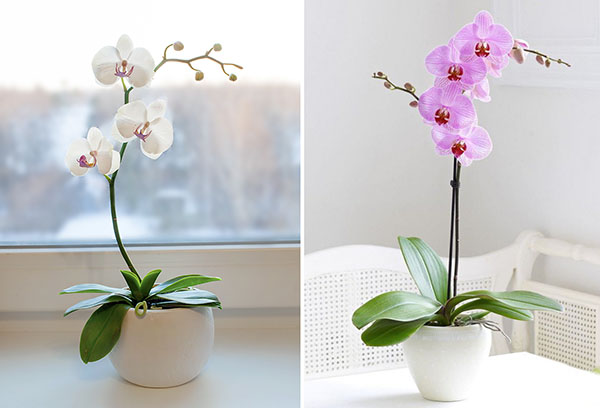
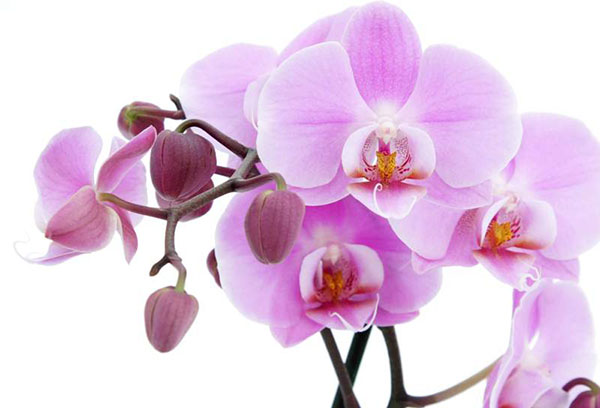
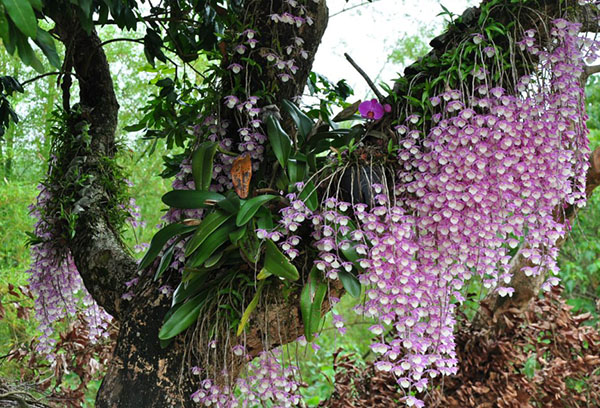
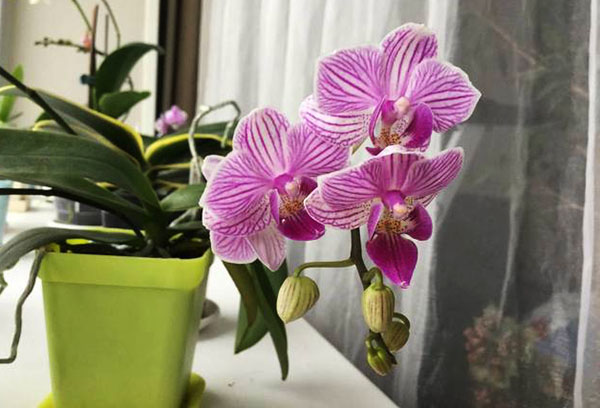
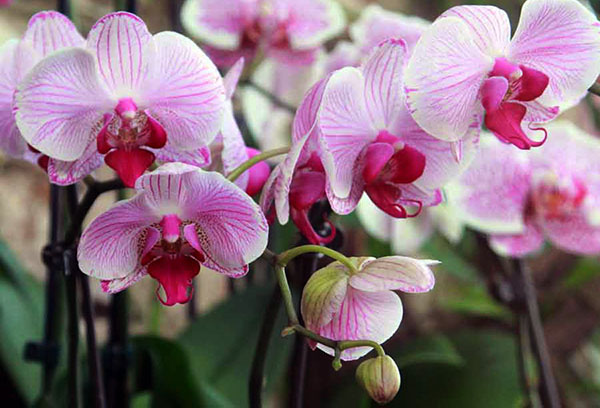
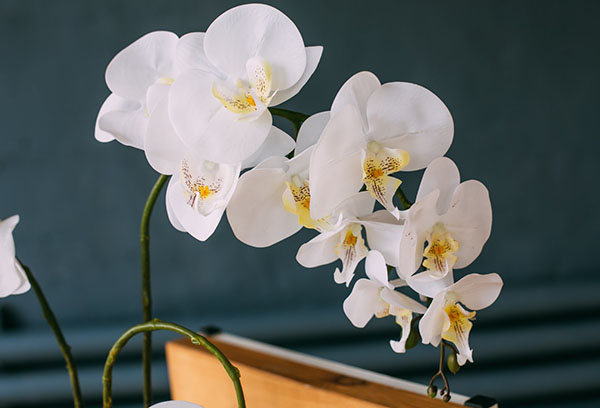
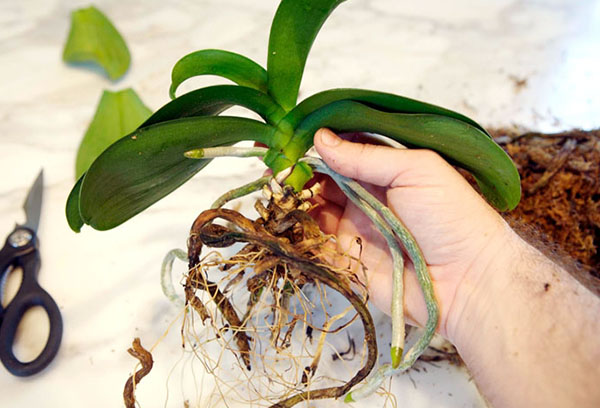
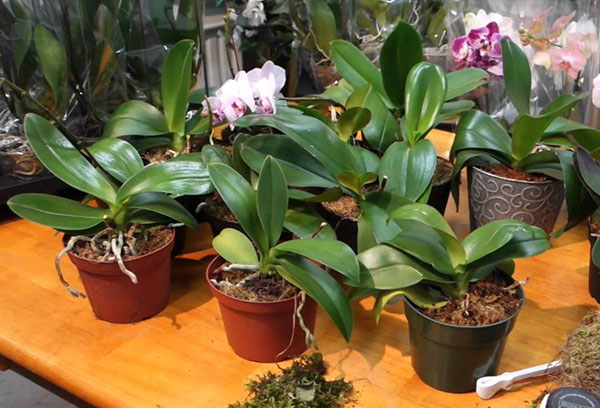
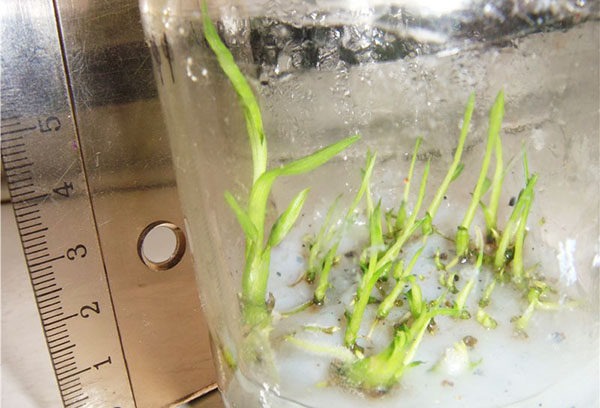
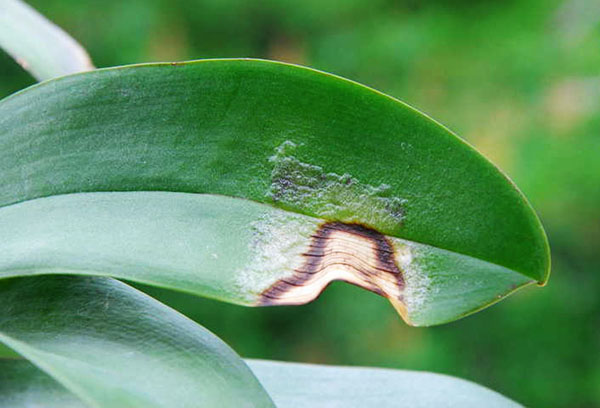
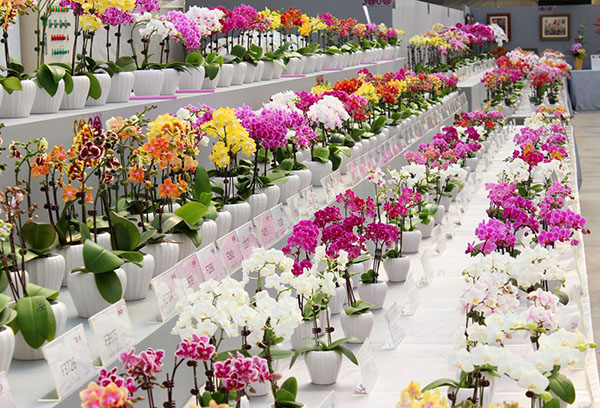
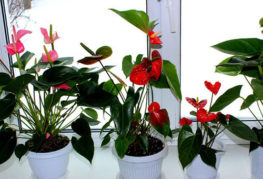
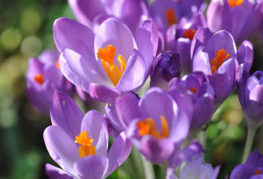
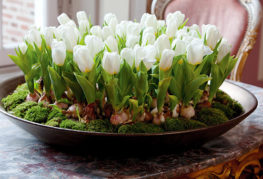
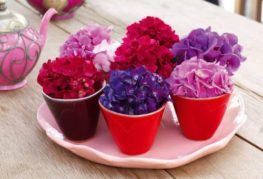
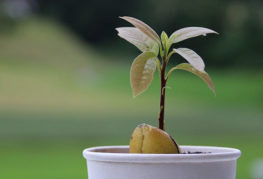
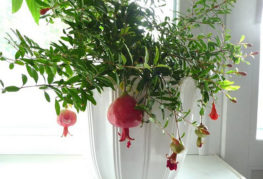
and will be published shortly.